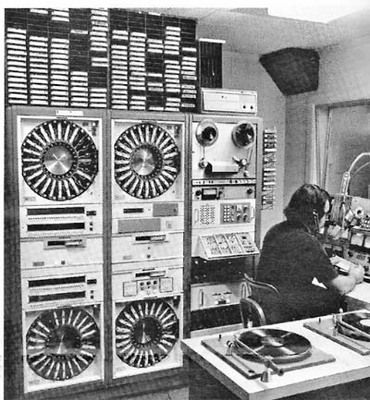
The college radio station where I worked 30 years ago is celebrating a half-century of broadcasting by inviting many of the former deejays back for on-the-air guest slots. I was honored to do a turn last week.
It was fun to play music in the old studio again and yak with some of the other jocks. We spent a lot of time commiserating over the sorry state of radio these days.
I moved to the Bay Area from Oregon as a teen, and although I landed there through no great insight of my own, to this day I view that fortunate accident as one of the most positive influences in my life.
It was the 1960s, and the San Francisco Bay Area was the cultural hub of the universe. In a matter of months, I went from being a hick from the sticks to an active participant in one of the great cultural and societal transformations of this country. Music was a huge part of that whole hippie-psychedelic-civil rights era, and FM radio was the media that spread the message.
Through the 1950s, nearly all radio was broadcast on the monaural AM band, and music was either classical, big-band or Top-40 pop.
FM was still an undeveloped medium when Stanford engineering student James Gabbert bought station KLX-FM from the Oakland Tribune. He moved it to Atherton (as KPEN) and began a series of innovations, emphasizing high-quality stereo signal output. When he boosted the power to 35,000 watts and relocated the transmitter to the Santa Cruz Mountains, it soon became evident that FM could be a viable force in commercial radio.
With its better fidelity and stereo broadcast, FM soon became the stereo home of rock and roll. In 1968, after quitting at fledgling FM rock station KMPX over programming limits, legendary radio pioneer Tom Donahue was hired by classical music broadcaster KSAN-FM and given the green light to take the San Francisco station into free-form rock. With the help of some of the old KMPX staff, Donahue made KSAN a national model for FM rock radio.
Most of us old farts at the reunion last week cited KSAN as the source for our radio aspirations. The jocks not only played a wide variety of music, including the longer cuts, but also made station educational — the deejays talked about the artists, the record labels and the songs. FM radio became the preferred entertainment medium for millions of teens and young adults; who listened night after night to learn about and hear everything we could.
Of course, money and politics changed all that within a decade or so. Music became a huge market, and corporate forces moved to control it. Officials at the Federal Communications Commission looked us in the eye and told us that dog doo-doo was caviar: that by allowing companies to own hundreds of stations across the country, we would actually get more variety, better content and greater local input.
The result has been the opposite, of course. Now, companies like Clear Channel Communications (with a handful of stations in the Monterey-Santa Cruz vicinity, more than 20 in the Bay Area, and more than 1,200 nationwide) play the same 30 or 40 songs all day, with canned announcements generally plugged in from a studio hundreds of miles away.
With more than 50 years of great popular music to draw on, it’s unfortunate that, to access it, one has to dial in an oldies station, then a classic rock station, then a country station, then an alt-country or Americana station, then a new music station, then a soft-rock station and on and on.
Even our once-unique local resource, KPIG, has been affected. With locally generated content now simulcast to company stations in five or six separate markets, KPIG ownership still claims insufficient advertising revenue and supplants live deejays with computer-generated programming roughly half the time.
These days, it is almost always the college radio stations (and the unlicensed pirate stations) where one finds real variety on a regular basis. The downside is that the jocks are often very narrowly focused on their own personal passions, airing hours of nothing but music from lesbian artists or klezmer performers or head-bangers or free-form jazz.
Still, there are some great jocks doing great radio at these stations — and if you still get excited by a variety of music presented in an interesting manner, it’s worth searching ’em out.
To quote noted musical poet Bob Seger: “Come back, baby, rock and roll never forgets.”
Steve Bailey of Boulder Creek has spent plenty of time in recreational activities. Contact him at sb*****@****io.com.












